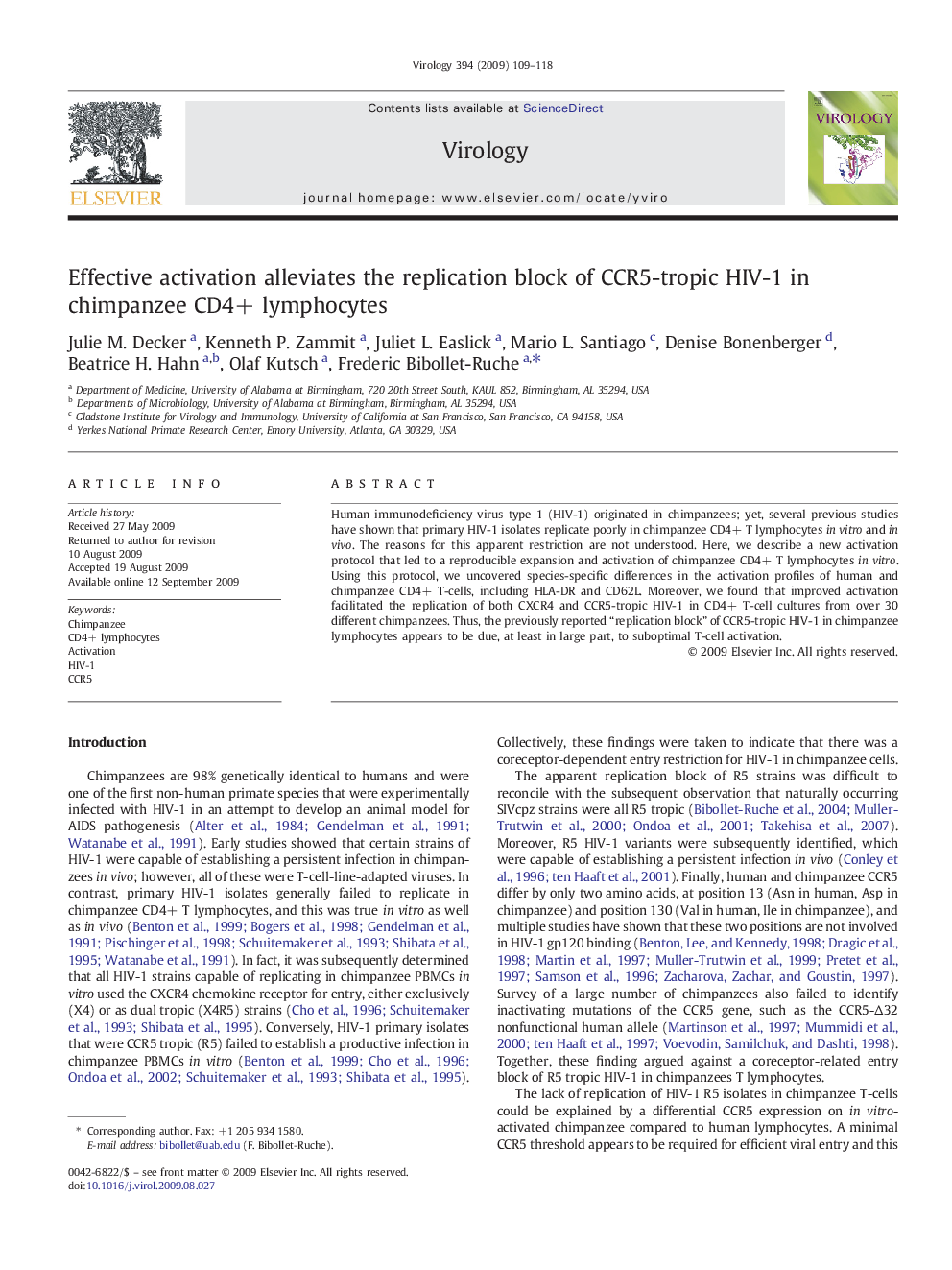| Article ID | Journal | Published Year | Pages | File Type |
|---|---|---|---|---|
| 6141796 | Virology | 2009 | 10 Pages |
Abstract
Human immunodeficiency virus type 1 (HIV-1) originated in chimpanzees; yet, several previous studies have shown that primary HIV-1 isolates replicate poorly in chimpanzee CD4+ T lymphocytes in vitro and in vivo. The reasons for this apparent restriction are not understood. Here, we describe a new activation protocol that led to a reproducible expansion and activation of chimpanzee CD4+ T lymphocytes in vitro. Using this protocol, we uncovered species-specific differences in the activation profiles of human and chimpanzee CD4+ T-cells, including HLA-DR and CD62L. Moreover, we found that improved activation facilitated the replication of both CXCR4 and CCR5-tropic HIV-1 in CD4+ T-cell cultures from over 30 different chimpanzees. Thus, the previously reported “replication block” of CCR5-tropic HIV-1 in chimpanzee lymphocytes appears to be due, at least in large part, to suboptimal T-cell activation.
Related Topics
Life Sciences
Immunology and Microbiology
Virology
Authors
Julie M. Decker, Kenneth P. Zammit, Juliet L. Easlick, Mario L. Santiago, Denise Bonenberger, Beatrice H. Hahn, Olaf Kutsch, Frederic Bibollet-Ruche,
